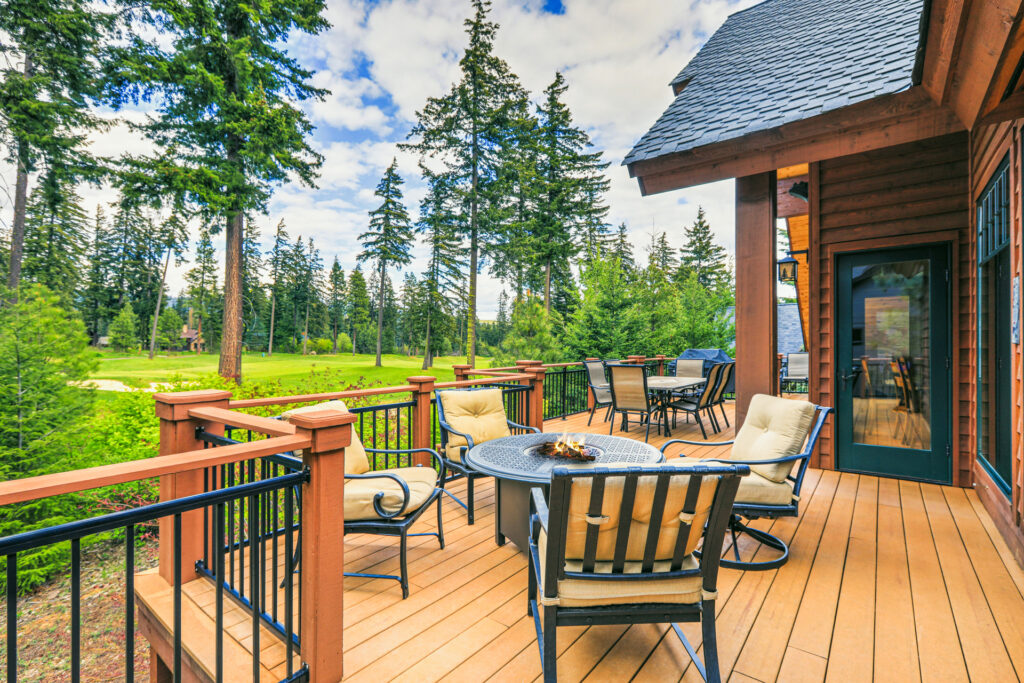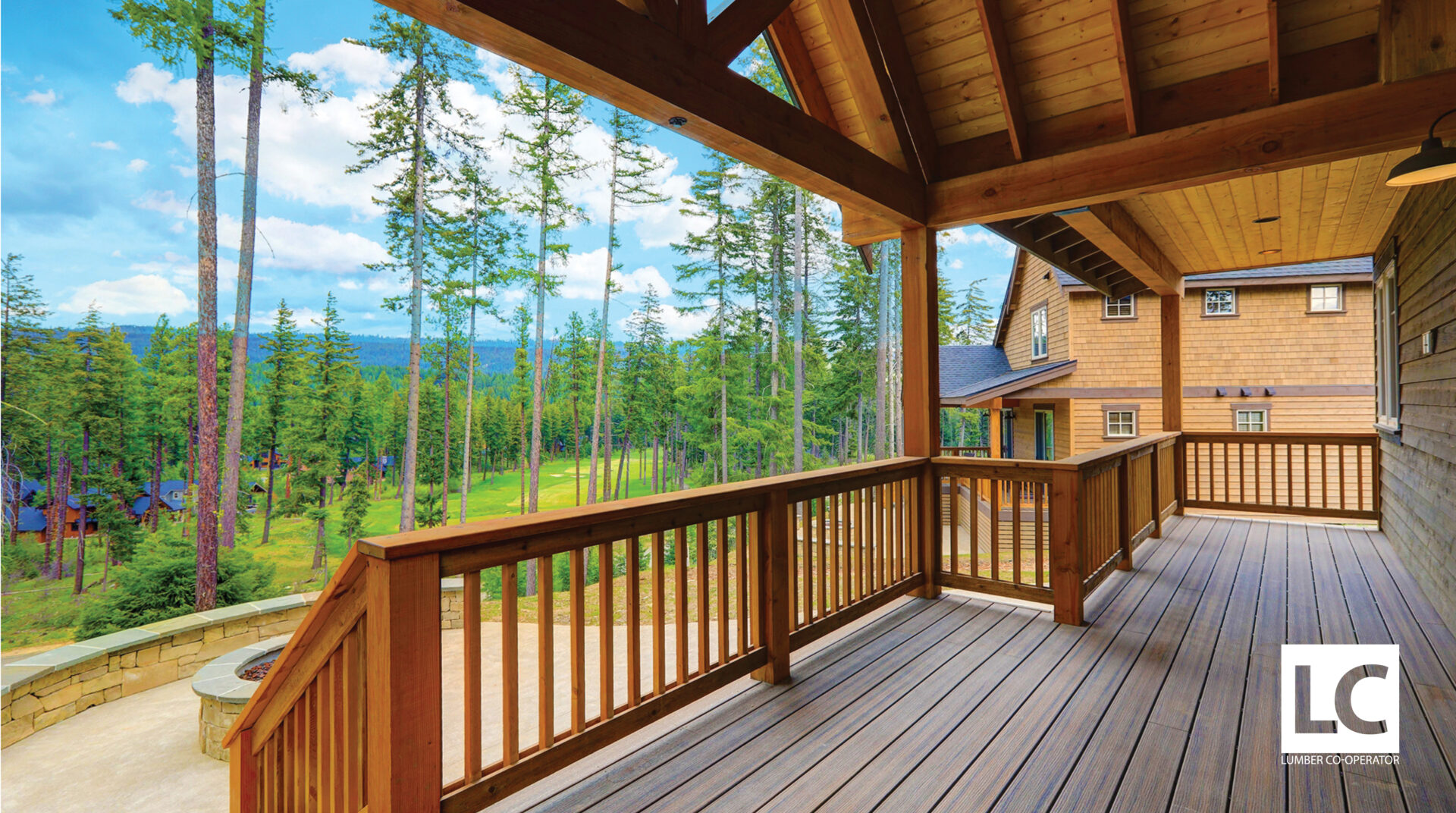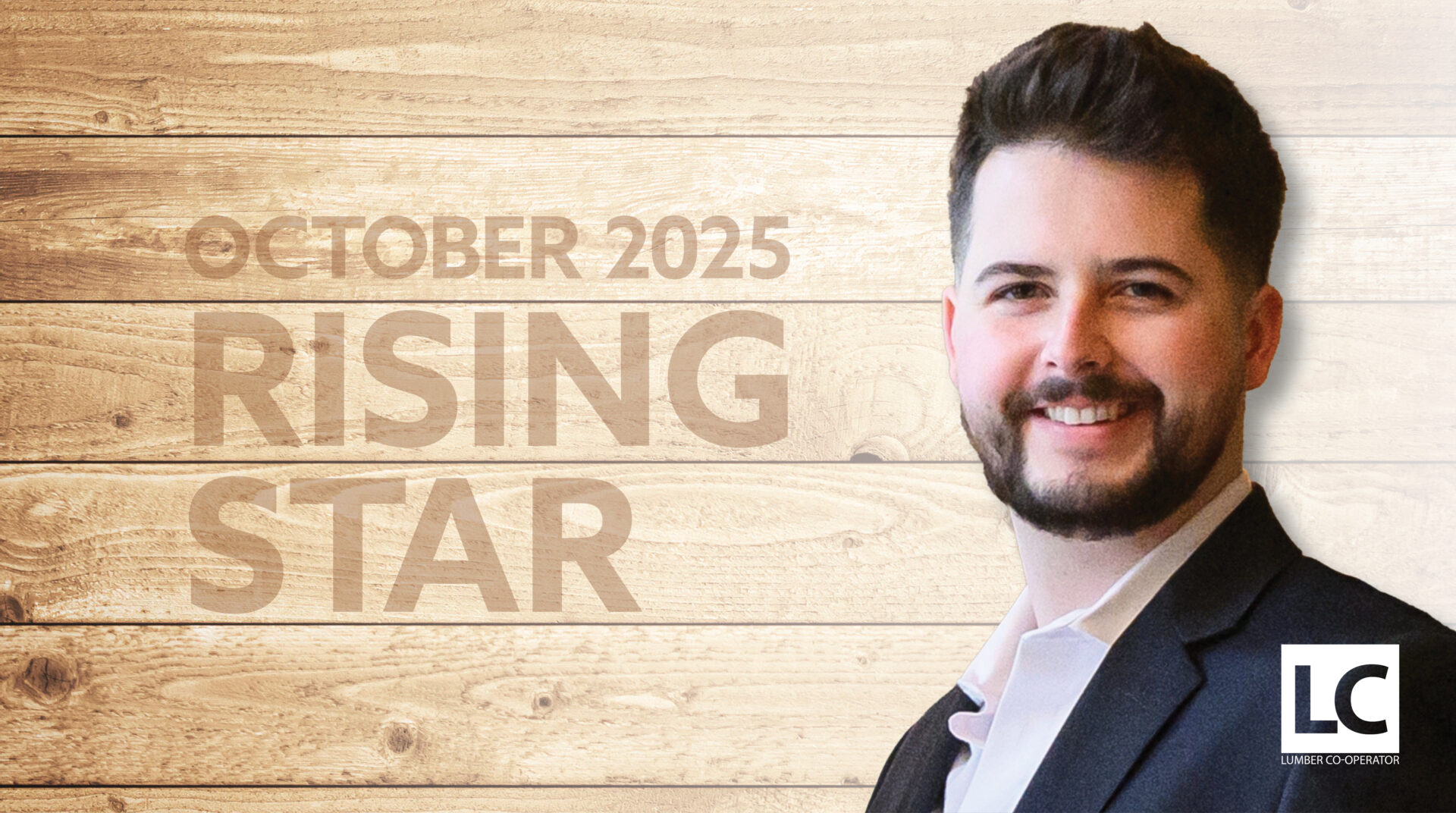Homeowners are investing more than ever in outdoor living spaces, and they are looking for materials that combine beauty, longevity, and affordability. Similarly, builders must have confidence in the products they are utilizing. The requirements include weather resistance, cost-effectiveness, low maintenance, and longevity.
To meet this growing demand, many lumber dealers are turning to pressure-treated wood as a reliable and versatile inventory staple.
After all, choosing the right outdoor materials helps create a sense of safety and comfort and enhances a home’s value.
Pressure-treated lumber has become a popular choice, providing moisture, insect, and rot resistance. Whether it is for a new deck, renovating an existing one, building a porch, or even constructing a playground, pressure-treated lumber can provide the peace of mind that it will be built to last.

The Real McCoy
Everyone wants the look of real wood. Why not just choose
real wood?
One of the biggest differentiators of using pressure-treated wood in outdoor spaces is the ability to deliver an authentic look. Composite materials offer certain advantages, but they do not live up to the natural look or texture that many homeowners want. For lumber dealers, this is an important consideration as it relates to what they keep on the shelves and in the showroom.
With pressure-treated lumber, customers can achieve a true wood grain that blends well with traditional, rustic, or modern-style homes. Plus, it can be stained or painted to achieve a range of desired colors or finishes, offering customization to meet personal preferences.
Leading pressure treaters are developing high-performance laminated timber columns designed for applications such as porch columns, decking, and load-bearing roofs. These columns can be painted or stained to achieve a variety of looks, serving as a real-wood alternative to PVC, fiberglass, or aluminum. Plus, those with hollow construction allow owners to run wiring through the interior for junction boxes, outdoor lights, speakers, and more, allowing for flexibility and a cleaner appearance while still having access to necessary amenities.
Cost Considerations
With composite prices still out of reach for many projects, pressure-treated wood remains one of the best-value materials on the market. It is also one of the most effective to stock. Contractors appreciate its cost-effectiveness and performance, while homeowners still appreciate its natural look and longevity. That value proposition gives dealers an edge, especially for larger projects like decks and porches.
Pressure-treated lumber is generally much less expensive compared to composite materials, which can generate significant cost savings. This makes pressure-treated wood an attractive choice for the budget-conscious homeowner or builder.
Generally, composite products are three to four times more expensive and may still fade and are susceptible to movement and swelling. In fact, the industry is witnessing a bit of a shift in this regard. Builders are rediscovering the efficacy of pressure-treated lumber as a viable alternative for outdoor spaces—and recommending such lumber to homeowners as the preferred raw material—because it just makes more sense in many cases. It is a much more cost-friendly option that looks great, and with occasional maintenance, it can last owners anywhere from 15 to 30 years in most climates. This all translates to savings for the lumber dealer and down the supply chain.
Weathering the Storm: Maintenance Considerations
Lumber dealers can help customers extend the lifespan of their investment by recommending regular visual checks of outdoor pressure-treated lumber. It should also be noted that maintenance is typically necessary every three to five years. This helps preserve the appearance of a deck, porch, or outdoor project in climates that are prone to the effects of moisture or debris.
When owners conduct regular maintenance, a very specific process must be followed. Lumber must be broken down to the original wood element, washed with soap and water and a light pressure wash, and then resealed with an oil-based paint, stain, or sealant. Oil-based products are important to prevent the wood from cracking, splitting, or rotting. Acrylic or latex sealants should be avoided because they absorb moisture, promoting much more rapid deterioration of the lumber.
Some decking boards are manufactured with eased edges and relief cuts that run the entire length of the underside. This design reduces cupping, warping, and splitting, creating a longer-lasting alternative to traditional lumber deck boards.
Standard pressure treatment can be taken a step further with optional kiln drying after treatment, an important step in creating a durable, long-lasting wood, depending on the application and climate. Kiln drying provides many benefits, such as:
• Moisture reduction: Kiln drying significantly reduces the moisture content of wood, making it more stable and less prone to warping, twisting, or splitting.
• Improved strength and durability: Drying the wood increases its strength and makes it more durable. This is beneficial for structural applications where pressure-treated wood is used to support the weight of a deck.
• Enhanced treatability: Kiln drying enhances the absorption and retention of preservatives applied during pressure treatment. By opening up the wood fibers, the drying process allows the chemicals to penetrate more deeply, offering improved protection against decay and insect damage.
• Weight reduction: Removing excess moisture makes the wood lighter, which can be advantageous for handling, transportation, and installation.
• Dimensional stability: Kiln-dried wood maintains its dimensions better over time, reducing the likelihood of shrinking or swelling.
• Better paint and stain adherence: Kiln drying provides a more consistent and drier surface, which allows paints, stains, and sealants to adhere better and last longer.
Whether the customer is spearheading a new deck project, a backyard playground, a porch space, or any other outdoor job, kiln-dried, pressure-treated wood is a high-performance, cost-competitive option. By offering a wide range of pressure-treated and kiln-dried solutions, lumber dealers can position themselves as a trusted resource for both contractors and homeowners seeking durable, long-lasting materials for outdoor projects.
Delivering Durable Outdoor Spaces
Pressure-treated wood products give dealers a competitive edge in today’s outdoor living boom. By offering products that are strong, beautiful, and backed by proven performance, dealers can meet customer expectations while maintaining higher margins and faster turnaround times.
For their customers, elevating the home or backyard oasis adds value and creates new gathering areas, perfect for entertaining family and friends. Pressure-treated lumber helps ensure that outdoor spaces endure over time. The material offers exceptional durability, longevity, versatility, and aesthetic appeal, enabling homeowners to achieve the natural wood look at a more affordable cost.
With proper maintenance and care, pressure-treated wood can deliver beautiful, long-lasting outdoor structures that add value and enhance curb appeal for years to come. This makes it a dependable, in-demand option for lumber dealers to stock and recommend.
Chris Brown serves as executive vice president at Culpeper Treated Lumber, a role he has held since 2020. With more than two decades of sales and marketing experience in the treated wood products industry, Brown has played a key role in driving growth and strengthening customer relationships since joining Culpeper in 2019. The organization is one of the largest producers of pressure-treated lumber in the United States and serves as a leading manufacturer of pressure-treated products for the residential, commercial, industrial, and marine markets.







